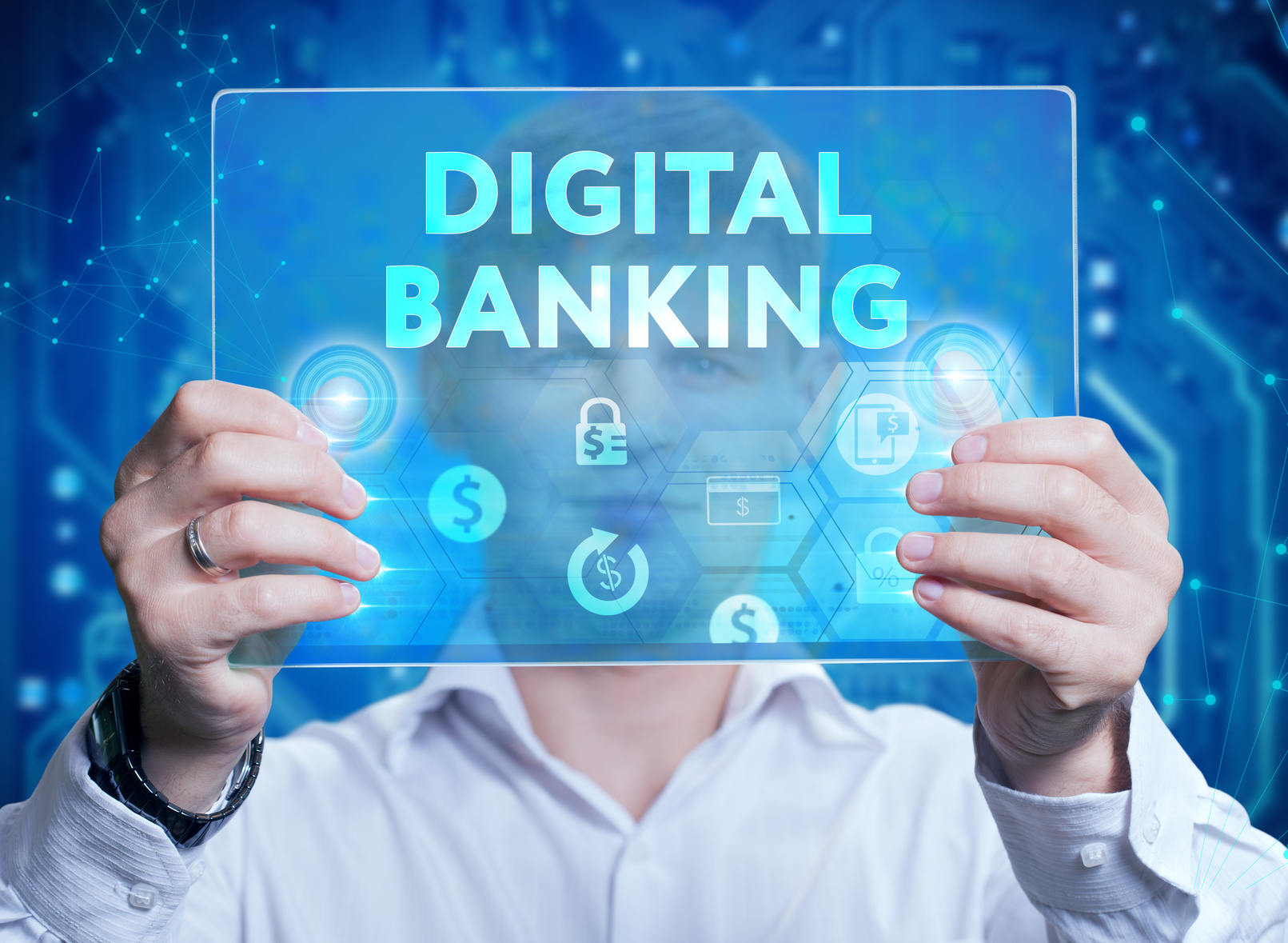The financial landscape is undergoing a revolutionary transformation, driven by advancements in digital banking and fintech. As technology continues to evolve, it is reshaping the way consumers and businesses interact with financial institutions. The rise of digital banking is more than just a trend; it’s a paradigm shift that is redefining the future of finance. This article delves into the growth of digital banking, the role of fintech in shaping this change, and what it means for consumers, businesses, and the global economy.
Table of Contents
What is Digital Banking?
Digital banking refers to the automation of traditional banking services. It encompasses a wide range of activities, from basic online banking tasks like checking account balances and transferring funds to more complex services such as digital loans, investment platforms, and cryptocurrency trading. With digital banking, the entire financial experience is available on smartphones, computers, and other internet-enabled devices, providing greater convenience, speed, and efficiency.
The Rise of Fintech
Fintech, short for financial technology, has played a significant role in the rise of digital banking. Fintech encompasses a variety of applications, from mobile payment apps to robo-advisors and blockchain technology. It is driving innovation in the financial sector by offering cutting-edge solutions that enhance the accessibility, speed, and security of banking services.
Key Drivers Behind the Rise of Digital Banking
- Changing Consumer Expectations
Consumers today expect instant access to financial services. With smartphones and internet connectivity readily available, people want to manage their finances on the go. The digital-first approach of fintech companies caters to these demands, offering services that are accessible anytime, anywhere. - Technological Advancements
The development of new technologies like artificial intelligence (AI), blockchain, and cloud computing has accelerated the growth of digital banking. These technologies allow financial institutions to offer more personalized and efficient services, such as AI-powered chatbots for customer support, blockchain for secure transactions, and cloud-based platforms for data management. - The COVID-19 Pandemic
The global pandemic significantly accelerated the adoption of digital banking as consumers avoided in-person visits to traditional bank branches. The need for contactless payments, online banking, and digital lending services surged, driving the growth of fintech and encouraging even traditional banks to invest heavily in digital transformation. - Regulatory Changes
Governments and regulatory bodies are increasingly recognizing the benefits of digital banking and fintech innovations. Regulatory changes, such as open banking, where banks share customer data with third-party providers with the customer’s consent, have fostered a more competitive environment that encourages innovation.
How Fintech is Shaping the Future of Finance
Fintech’s impact on digital banking goes beyond just offering convenient services. It is actively reshaping the entire financial ecosystem in the following ways:
- Expanding Financial Inclusion
One of the most significant benefits of digital banking is its ability to expand financial access. Fintech companies are providing banking services to people who previously had no access to traditional financial institutions. Mobile banking apps and online payment platforms allow users to perform financial transactions without the need for a physical bank account. This development is particularly impactful in developing countries, where millions of people can now participate in the global economy. - Disrupting Traditional Banking Models
Fintech startups are challenging traditional banks by offering faster, cheaper, and more innovative services. For example, online-only banks or “neobanks” have emerged, providing high-interest savings accounts, low-cost loans, and fee-free transactions, all through digital platforms. This competition is pushing traditional banks to adapt by integrating fintech solutions into their own offerings. - Enhancing Customer Experience
The use of artificial intelligence and data analytics in fintech allows for a more personalized banking experience. AI-powered tools can analyze user behavior and financial habits to provide tailored financial advice, investment recommendations, or even detect fraudulent activities. Enhanced customer service is also achieved through AI-driven chatbots that can answer queries in real-time. - Lowering Costs for Consumers and Businesses
Digital banking services often come at a lower cost compared to traditional banking because they eliminate the need for physical infrastructure, reduce staffing requirements, and use automation to streamline processes. For businesses, fintech solutions offer more affordable payment processing, faster invoicing, and better financial management tools. - Driving Innovation in Payments
Fintech is transforming how we make payments, with mobile wallets, peer-to-peer payment apps, and contactless payments becoming mainstream. Payment services like Apple Pay, Google Wallet, and PayPal are widely used for online shopping and in-store purchases, while cryptocurrencies and blockchain technology are making cross-border payments faster and more secure. - Improving Lending and Credit Services
Digital lending platforms are revolutionizing the loan approval process. By using alternative credit scoring methods and AI-driven risk assessment, fintech lenders can approve loans more quickly and at potentially lower interest rates. This democratizes access to credit and provides more options for individuals and small businesses.
Challenges and Risks of Digital Banking
While digital banking presents many advantages, it also comes with its share of challenges:
- Cybersecurity Concerns
As more financial transactions move online, the risk of cyber threats, such as data breaches and identity theft, increases. Fintech companies and digital banks need to invest in robust security measures, including encryption and multi-factor authentication, to protect customer data. - Regulatory and Compliance Issues
The rapid evolution of fintech services has outpaced regulatory frameworks in some regions, leading to uncertainty around compliance. Governments and financial institutions must collaborate to develop regulations that support innovation while safeguarding consumers. - Technological Dependence
Digital banking relies heavily on technology, and service disruptions due to system failures, technical issues, or cyberattacks can lead to significant problems for users. Maintaining system reliability and customer trust is a priority for digital banks.
The Future of Digital Banking
Looking ahead, several trends are set to shape the future of digital banking:
- Increased Adoption of AI and Machine Learning
The use of AI and machine learning in digital banking will continue to expand. These technologies will be used to automate tasks, provide more accurate risk assessments, and enhance fraud detection. AI will also play a key role in creating personalized banking experiences by analyzing user data and predicting financial needs. - Growth of Decentralized Finance (DeFi)
Decentralized finance, or DeFi, is an emerging trend in fintech that leverages blockchain technology to create decentralized financial systems. DeFi platforms enable users to borrow, lend, and trade without intermediaries like traditional banks. This trend has the potential to further disrupt the financial sector and create new opportunities for investors. - The Evolution of Open Banking
Open banking initiatives, where banks share financial data with third-party providers through secure APIs, will continue to evolve. This trend encourages competition and innovation, leading to better services and lower costs for consumers. As more financial institutions embrace open banking, customers can expect seamless integration between different financial services. - Enhanced Cybersecurity Measures
As digital banking continues to grow, there will be an increased focus on cybersecurity. Financial institutions will adopt more sophisticated tools and techniques, such as biometric authentication, blockchain technology for secure transactions, and AI-driven fraud prevention, to protect customer data. - The Integration of Cryptocurrency
Cryptocurrencies are gradually being integrated into mainstream finance. In the future, digital banks may offer cryptocurrency accounts, and users might be able to make everyday purchases using digital currencies. Blockchain technology, which underpins cryptocurrencies, is also expected to be used for secure and efficient financial transactions.
Conclusion
The rise of digital banking and fintech is reshaping the financial world in profound ways. With innovations in AI, blockchain, and mobile technology, digital banking is set to become the new standard, offering greater accessibility, lower costs, and improved services. However, challenges such as cybersecurity and regulatory compliance need to be addressed to ensure sustainable growth.
For more insights into the evolving world of finance, visit ProviderProbe to stay updated on the latest trends in digital banking and fintech.






